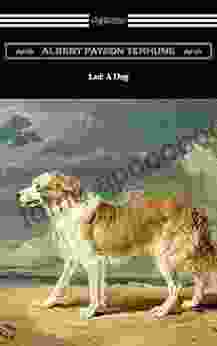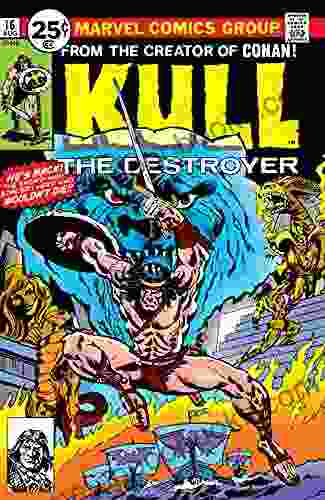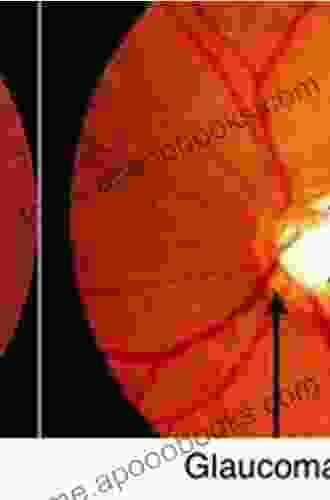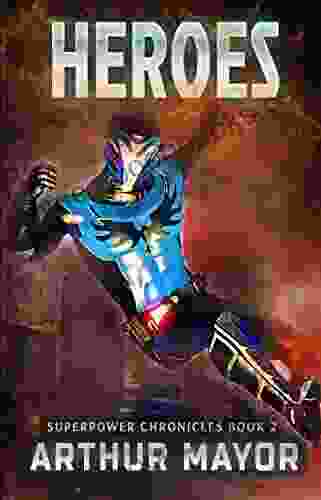The Optic Nerve Evaluation in Glaucoma: A Comprehensive Guide

Glaucoma is a group of eye diseases that damage the optic nerve, which is responsible for transmitting visual information from the eye to the brain. The optic nerve is located at the back of the eye and is made up of over a million nerve fibers. Glaucoma can cause damage to these nerve fibers, which can lead to vision loss and even blindness.
4 out of 5
| Language | : | English |
| File size | : | 66155 KB |
| Text-to-Speech | : | Enabled |
| Enhanced typesetting | : | Enabled |
| Print length | : | 144 pages |
| Screen Reader | : | Supported |
The optic nerve evaluation is an important part of the diagnosis and management of glaucoma. By carefully examining the optic nerve, ophthalmologists and optometrists can assess the extent of damage and determine the best course of treatment.
Anatomy and Physiology of the Optic Nerve
The optic nerve is a bundle of over a million nerve fibers that connects the retina to the brain. The retina is the light-sensitive tissue that lines the back of the eye. When light enters the eye, it is focused on the retina, which converts the light into electrical signals. These signals are then transmitted to the brain via the optic nerve.
The optic nerve is divided into two parts: the optic head and the optic nerve trunk. The optic head is the portion of the optic nerve that is located within the eye. The optic nerve trunk is the portion of the optic nerve that extends from the optic head to the brain.
The optic nerve is surrounded by a protective sheath called the dura mater. The dura mater helps to keep the optic nerve in place and protects it from injury.
Pathophysiology of Glaucoma
Glaucoma is caused by damage to the optic nerve. This damage can be caused by a number of factors, including:
* Increased intraocular pressure (IOP) * Decreased blood flow to the optic nerve * Oxidative stress * Inflammation
IOP is the pressure inside the eye. When IOP is too high, it can damage the optic nerve. IOP can be increased by a number of factors, including:
* Narrowing of the drainage channels in the eye * Overproduction of aqueous humor (the fluid that fills the eye) * Blockage of the drainage channels by scar tissue
Decreased blood flow to the optic nerve can also damage the nerve. This can occur due to a number of factors, including:
* Arteriosclerosis (hardening of the arteries) * Diabetes * High blood pressure
Oxidative stress is a process that can damage cells and tissues. It is caused by an imbalance between the production of free radicals and the body's ability to neutralize them. Free radicals are molecules that have unpaired electrons. They can damage cells by attacking their DNA, proteins, and lipids.
Inflammation is a process that can damage cells and tissues. It is caused by the release of inflammatory mediators, such as cytokines and chemokines. These mediators can damage cells by causing them to swell and die.
Clinical Examination of the Optic Nerve
The optic nerve evaluation is an important part of the diagnosis and management of glaucoma. By carefully examining the optic nerve, ophthalmologists and optometrists can assess the extent of damage and determine the best course of treatment.
The optic nerve evaluation includes the following steps:
* Visual acuity testing * Visual field testing * Ophthalmoscopy * Gonioscopy * Optic nerve imaging
Visual acuity testing measures the sharpness of vision. It is performed using a Snellen chart or a similar device.
Visual field testing measures the範囲of vision. It is performed using a perimeter or a similar device.
Ophthalmoscopy is a technique that allows the ophthalmologist or optometrist to examine the inside of the eye. It is performed using an ophthalmoscope, which is a lighted instrument that is used to look into the eye.
Gonioscopy is a technique that allows the ophthalmologist or optometrist to examine the drainage channels in the eye. It is performed using a gonioscope, which is a special lens that is used to look into the eye.
Optic nerve imaging is a technique that allows the ophthalmologist or optometrist to create a detailed image of the optic nerve. It is performed using a variety of imaging techniques, such as optical coherence tomography (OCT) and scanning laser ophthalmoscopy (SLO).
Diagnosis and Management of Glaucoma
The diagnosis of glaucoma is based on the results of the optic nerve evaluation and other tests. The treatment of glaucoma is aimed at lowering IOP and preventing further damage to the optic nerve.
The treatment of glaucoma may include the following:
* Medications * Laser surgery * Traditional surgery
Medications are the most common treatment for glaucoma. There are a variety of medications that can be used to lower IOP. These medications include:
* Prostaglandin analogs * Beta-blockers * Alpha-agonists * Carbonic anhydrase inhibitors
Laser surgery is a less invasive treatment option for glaucoma. Laser surgery can be used to create a new drainage channel in the eye or to widen an existing drainage channel.
Traditional surgery is the most invasive treatment option for glaucoma. Traditional surgery is typically performed when other treatment options have failed to lower IOP.
The optic nerve evaluation is an important part of the diagnosis and management of glaucoma. By carefully examining the optic nerve, ophthalmologists and optometrists can assess the extent of damage and determine the best course of treatment.
The Optic Nerve Evaluation in Glaucoma: A Comprehensive Guide is a valuable resource for ophthalmologists, optometrists, and other eye care professionals involved in the diagnosis and management of glaucoma. This book provides essential information on all aspects of optic nerve evaluation, including anatomy, physiology, pathophysiology, and clinical examination techniques.
4 out of 5
| Language | : | English |
| File size | : | 66155 KB |
| Text-to-Speech | : | Enabled |
| Enhanced typesetting | : | Enabled |
| Print length | : | 144 pages |
| Screen Reader | : | Supported |
Do you want to contribute by writing guest posts on this blog?
Please contact us and send us a resume of previous articles that you have written.
 Book
Book Novel
Novel Page
Page Chapter
Chapter Text
Text Story
Story Genre
Genre Reader
Reader Library
Library Paperback
Paperback E-book
E-book Magazine
Magazine Newspaper
Newspaper Paragraph
Paragraph Sentence
Sentence Bookmark
Bookmark Shelf
Shelf Glossary
Glossary Bibliography
Bibliography Foreword
Foreword Preface
Preface Synopsis
Synopsis Annotation
Annotation Footnote
Footnote Manuscript
Manuscript Scroll
Scroll Codex
Codex Tome
Tome Bestseller
Bestseller Classics
Classics Library card
Library card Narrative
Narrative Biography
Biography Autobiography
Autobiography Memoir
Memoir Reference
Reference Encyclopedia
Encyclopedia Anton Howes
Anton Howes Anton Hager
Anton Hager Asma Khan
Asma Khan Atlas Rose
Atlas Rose Arne Broman
Arne Broman Phillip G Henderson
Phillip G Henderson Maxence Fermine
Maxence Fermine Anupam Rajak
Anupam Rajak Applicant Guide
Applicant Guide Atrey Tejas Rayaprolu
Atrey Tejas Rayaprolu Anton Sebastian
Anton Sebastian Paula Huntley
Paula Huntley Anthony J Comerota
Anthony J Comerota Sandra Easton
Sandra Easton George Kalogeris
George Kalogeris Makenna Goodman
Makenna Goodman D N Bryn
D N Bryn Connie Ewbank
Connie Ewbank Ardith Design
Ardith Design Anthony R Mc Collin
Anthony R Mc Collin
Light bulbAdvertise smarter! Our strategic ad space ensures maximum exposure. Reserve your spot today!

 Henry JamesMy Grandmother Asked Me to Tell You She's Sorry: A Heartfelt and Empowering...
Henry JamesMy Grandmother Asked Me to Tell You She's Sorry: A Heartfelt and Empowering... Rob FosterFollow ·19.4k
Rob FosterFollow ·19.4k Ben HayesFollow ·16.7k
Ben HayesFollow ·16.7k Rod WardFollow ·9.2k
Rod WardFollow ·9.2k Charles BukowskiFollow ·12.1k
Charles BukowskiFollow ·12.1k Francisco CoxFollow ·7.2k
Francisco CoxFollow ·7.2k Logan CoxFollow ·9.2k
Logan CoxFollow ·9.2k Mario Vargas LlosaFollow ·10.9k
Mario Vargas LlosaFollow ·10.9k Douglas FosterFollow ·15.9k
Douglas FosterFollow ·15.9k

 Gabriel Garcia Marquez
Gabriel Garcia MarquezLad Dog Baby Professor: The Perfect Book for Your Child
Lad Dog Baby...

 Fredrick Cox
Fredrick CoxAn Excerpt With Fifty Ways To Help Animals Promo Books:...
: Embracing Animal...

 Kelly Blair
Kelly Blair5th Grade US History: Famous US Authors: Fifth Grade...
Step into a captivating world of historical...

 Natsume Sōseki
Natsume SōsekiKull the Destroyer: A Timeless Tale of Sword and Sorcery
The Creation of a...

 Jim Cox
Jim CoxDas Ist Supertoll: Unlocking the Magic of German for Kids
Immersive Learning with...

 Bruce Snyder
Bruce SnyderUnlock the World of Quilting for Kids: Discover "Quick...
Are you ready to embark on a delightful...
4 out of 5
| Language | : | English |
| File size | : | 66155 KB |
| Text-to-Speech | : | Enabled |
| Enhanced typesetting | : | Enabled |
| Print length | : | 144 pages |
| Screen Reader | : | Supported |










